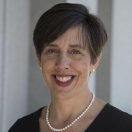
SUMMARY OF NEW DATA
Today, on the anniversary of the National HIV/AIDS Strategy, ONAP is releasing an updated version of the Indicator Supplement, which outlines everything you want to know about the Strategy’s indicators, or measures of progress, toward its 2020 goals.
This updated Indicator Supplement contains the latest available data on the Strategy’s indicators. The indicator data were published in CDC’s report monitoring selected national HIV prevention and care objectives by using HIV surveillance data. In the Indicator Supplement, we also provide an assessment of whether the indicators are meeting annual targets. As part of the Indicator Supplement, we released an infographic that summarizes our overall progress in meeting the annual targets:

And in this new video, I explain our progress and what the data mean for our comprehensive response to HIV:
Overall, progress is being made in the fight against HIV, nationally and in key groups. Progress is being made in each of the three goals of the Strategy. The targets for the most recent year were met for more than half of the indicators.
Notably, there were improvements in several key indicators:
- New HIV diagnoses dropped by 7% from 2010 to 2013.
- The death rate dropped by about 30%, approaching the 2020 target.
- Knowledge of serostatus, linkage to care, and viral suppression all increased.
- Disparities in HIV diagnoses for black women and girls decreased.
- Viral suppression increased among youth and among people who inject drugs.
However, we also have to consider that we are not seeing progress on some indicators.
- Although diagnoses dropped overall, progress in reducing the diagnosis disparity experienced in the Southern United States stalled.
- Homelessness among persons with HIV continued to inch upward.
- And among gay and bisexual men, disparities in new diagnoses and HIV risk behaviors showed increases, rather than the expected decreases.
TOWARD THE GOALS OF THE STRATEGY
These data show that considerable progress is being made, but that all groups have not benefitted equally. We still have more progress to make in order to achieve the goals of the National HIV/AIDS Strategy.
Many new programs were initiated between the year reflected in most data and now. Together, we have worked diligently to scale up access to effective HIV prevention tools and high quality HIV medical care. We have worked to deploy new scientific findings quickly and to use programmatic lessons learned in communities across the country to guide our efforts. We have followed the Strategy to align resources with the epidemic, focusing on the populations and communities with the greatest burden of HIV.
New initiatives in the past few years, for example, include:
- A HRSA-funded initiative to enhance the capacity of Ryan White HIV/AIDS Program grantees to increase engagement and retention of young gay men of color in care;
- A CDC-led multi-agency demonstration project to identify effective models of care for gay men of color who are living with, or at risk for, HIV; and
- Expansion of the NIH-funded Women’s Interagency HIV Study to include more clinical sites in the South.
The Strategy’s Federal Action Plan delineates actions for 2016 through 2020 that will continue progress. For 2016, Federal agencies have committed to nearly 100 actions to implement the Strategy, many of which are collaborative across agencies. Many of these address the areas where we are not meeting the indicator targets, including actions focusing on gay and bisexual men and persons living in the Southern United States, and actions addressing housing for people living with HIV.
We also have a Community Action Plan Framework which community-based organizations, advocacy groups, educational institutions, and health care delivery organizations are encouraged to use to help align activities and programs with the goals and actions of the Strategy.
With the Strategy serving as our roadmap, we must not let up effort until we achieve our nation’s goals. If we let up in areas where we are seeing progress, we risk the possibility that our hard-won gains will be eroded over time. For indicators that did not meet their annual target, we must look carefully at the data and our actions to consider, for example, what needs to be scaled up, intensified, targeted, or changed. It is only by working together, monitoring our annual progress, and continuing to improve our prevention and care efforts that we will be able to achieve these goals.


